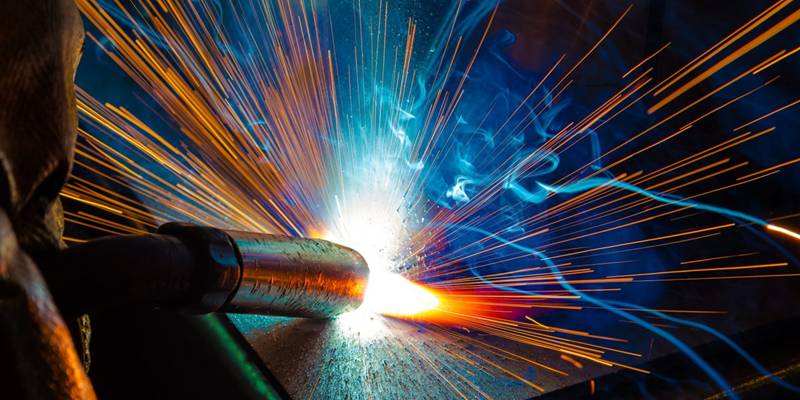- July 22, 2022
Welding is a process that joins metal parts together. It is one of the most common methods for making connections between metal objects, and there are many different types of welding. is Sheet metal welding a subset of welding used to construct metal structures, piping, and other things such as storage tanks?
The art of welding sheet metal is a complex process involving various techniques. You must have the proper knowledge and skills to get the best possible results in a welding job. Sheet metal welding is a great way to save time on your projects.
This article will include methods and essential suggestions to remember while welding thin metal sheets for the best results.
What is Sheet Metal Welding?
Welding sheet metal is one of the manufacturing industry’s basic processes for joining metals. The process usually requires heating the two pieces of sheet metal up to the melting point, then using a torch to weld them together.
The Welding sheet metal process is commonly found on aircraft, cars, trucks, appliances, boats, ships, and other industrial equipment.
Available Methods for Sheet Metal Welding
Now comes the big question, “how to weld sheet metal” There are many ways to do that. Let’s find out different types of sheet metal welding methods.
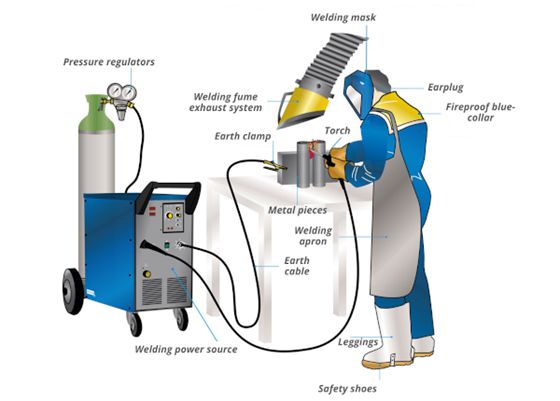
MIG Welding
MTG or Metal Inert Gas welding is a type of welding process using an electric arc to melt filler material and join two or more pieces of metal together. MIG is commonly used for welding thin materials, such as sheet metal and tubing.
The shielding gas is provided by a mixture of argon and carbon dioxide. The filler material is fed through a welding gun, and the molten filler material forms a bead at the end of the joint. A consumable wire feeder supplies the filler material.
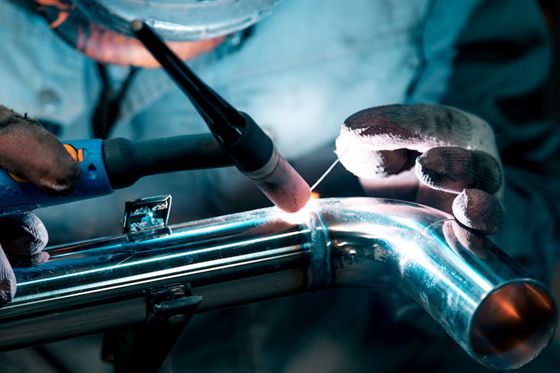
TIG Welding
Tungstate is an element that occurs naturally in minerals like wolframite and scheelite. Tungsten is not found in nature but is made synthetically. It is used in many industries, including electronics, optics, and metallurgy.
Tungsten is used in arc welding because it provides a high melting point and low vapor pressure. Argon and helium are commonly used gases in welding.
A filler material is used for reinforcement or building up seams. An electric torch is used instead of an oxyacetylene flame.
The welder’s hands feed the filler rod into the puddle. Soft starting and stopping the heat allows for welding sheet metal or welding metal. Welding in this position is often referred to as “out-of-position” welding. You can find the differences between MIG and TIG welding in this article.
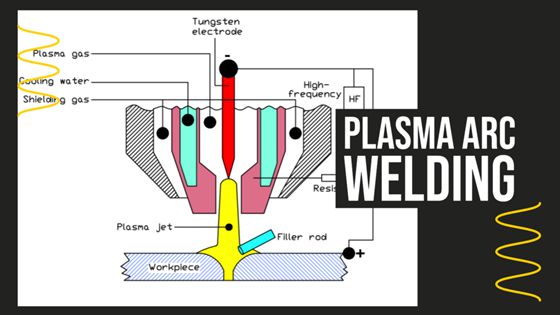
Plasma Arc Welding
Plasma Arc Welding melts metal wire using an electric current. A gas is then blown through the molten pool to form a plasma, which creates a strong arc.
This arc heats the base material, melting it and creating a weld. Plasma Arc Welding is commonly used for shipbuilding, aircraft manufacturing, and other industrial applications.
Unlike TIG welding, it does not require filler materials and produces high-quality welds. It also needs lower power and works at higher speeds than TIG welding. This type of welding is used in various industries such as construction, field repair, manufacturing, shipbuilding, and petroleum.
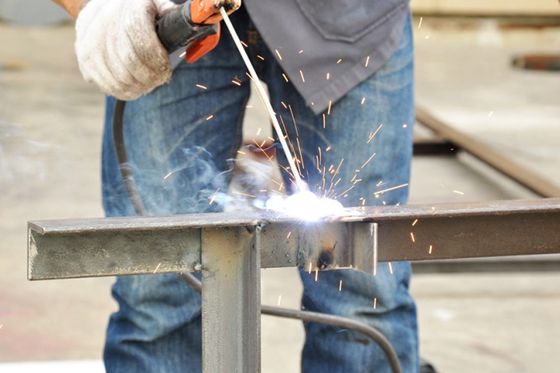
Stick Welding
Arc welding is a type of welding process that uses an electric current to melt metal wire or rod and fuse it together. Arc welding requires two electrodes: a positive electrode called the consumable electrode or filler material and a negative electrode called the base material. A third electrode, known as the ground or shield plate, provides a path for the electrical current to flow back to the source.
It is commonly used in shipbuilding, construction, and steel fabrication industries.
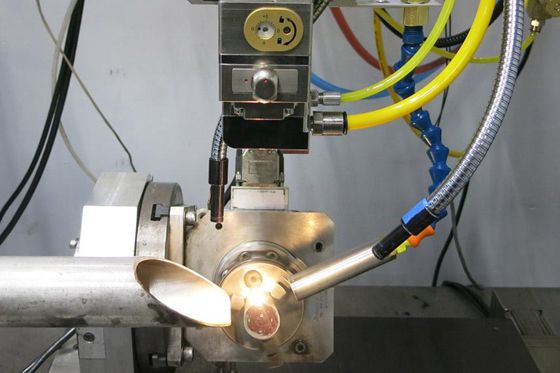
Electron Beam and Laser Welding
Electron beam welding (EBW), also called electron beam welding (EBM), is an arc welding process using a focused stream of electrons to melt filler metal and join two pieces of material together.
Gas Welding
Gas welding is an excellent method for joining thin sheets of steel, aluminum, copper, brass, stainless steel, titanium, and other alloys. It does not require electricity and is highly economical.
Gas welding is also useful for joining small components like nuts, bolts, screws, washers, and springs. However, gas welding requires a lot of skill and experience. Isn’t it time to get started with gas welding? We have a step-by-step tutorial that will help you master the art of gas welding.
Defects are very common in sheet metal welding. We have a dedicated article on common defects on Common Defects And How To Solve Them In Different Sheet Metal Processes. Don’t forget to check it out.
Metal Types Used in Sheet Metal Welding
While stainless steel is a common metal used in sheet metal welding, there are others that are used as well. These include aluminum, carbon steel, and even gold.
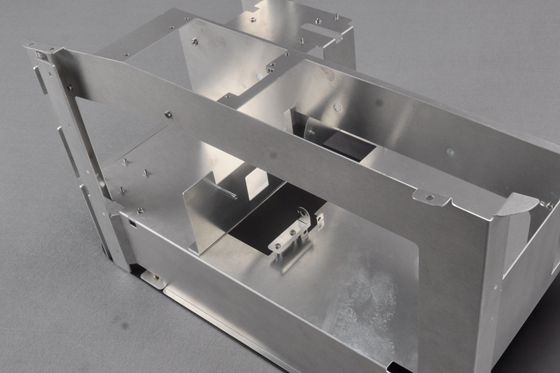
Each metal has its own benefits and drawbacks that should be considered before welders begin their projects. Carbon steel is the cheapest and most commonly used metal in sheet metal welding. It is strong and easy to weld but it is also susceptible to rust and corrosion.
Aluminum is another popular metal used in sheet metal welding. It is lightweight and resistant to corrosion but it can be difficult to weld.
Gold is the most expensive metal used in sheet metal welding. It is incredibly strong and does not corrode but it is also very difficult to weld.
Surface to Consider for Sheet Metal Welding Method
We have listed the best surface you can consider When Choosing welding sheet metal.
Flat Surface
Flat welding works best on flat surfaces. When welding on a flat surface, you need to keep the torch pointed at an angle to the surface. It would be best if you also moved the torch back and forth along the seam to ensure that all seam sides are melted.
Horizontal Surface
When the setup is horizontal, the metal sheets give the welder the impression of being flat. However, it can take either of two forms.
Fillet Weld
The process of uniting two surfaces at an angle results in a fillet weld. A piece of metal is placed on top of the second piece of metal, and both pieces are heated until they become soft enough to fuse together. Once the two parts of the metal are fused together, the resulting weld looks like the letter ‘L.’
Groove Weld
A groove weld is made when two pieces of metal meet at an angle. One piece of metal is placed above another, and then both metals are pressed together. The result is a seam that looks like a groove.
Expert Tips: for horizontal surfaces, stick welding is the best option.
Vertical Surface
The welder is essentially in an upright surface-facing posture when it is in the vertical position of the welding shaft. When welding, you need to hold your torch at an angle of 45° to the plate. You also need to keep the electrode tip away from the molten metal.
If you point the torch directly towards the molten metal, the metal will flow down and cover the tip of the electrode. This means you won’t get a clean arc, and you’ll end up with a poor-quality weld.
Overhead Surface
Overhead welding is the most challenging type because the molten metal drops down as you try to weld. You should also keep an eye out for splatter. Minimize the size of the weld pool by using enough filler material. And remember to use enough heat to get a good weld.
10 Tips for Sheet Metal Welding
Now that you know some of the metals used in sheet metal welding, here are some tips to help you get started. First, always use clean, dry tools. Wet tools can cause the metal to rust and corrode.
Second, when welding metal, be sure to use the correct amperage and voltage. Too much or too little can cause the weld to be weak and break. Finally, always test your welds before using them. This will ensure that they are strong and will not break under pressure.
Shop safety while welding Whenever you are using welding equipment, it is important to practice shop safety. This includes wearing the proper safety gear, such as a welding helmet, gloves, and apron. Additionally, always be sure to have a fire extinguisher on hand in case of an accident.
Now it’s time to give you some more expert tips so that you can perfectly complete welding metal.
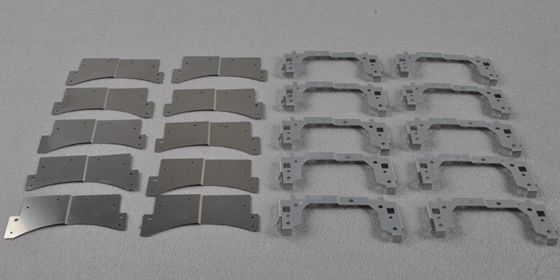
1. Use Right Technique for Metal
Before arc welding or oxygen gas, there were simple ways to do things. Welding tough metals like stainless steel and titanium is now easy, thanks to modern technology. But each type of metal needs a different technique, and it’s up to us to choose the right one. We need to decide on the best way to do the job.
2. Use the Skip Welding Method
The technique is known as “skip welding” entails performing several stitches or short welds at strategic locations in order to secure the position of the thin sheet metal. After a few minutes of cooling, the welder can proceed to weld in previously un-weldable areas. It is possible to reduce metal distortion and warping by using skip welding.
Skip welding is an effective method for joining thin sheets of metal together. It allows you to avoid distorting the shape of the parts and avoids warping.
When welding, avoid weaving the torch; instead, quickly move the torch back and forth along a straight line.
3. Tack Welding Technique
Tack Welding is an excellent method for joining thin sheets of steel. It is also called spot welding. Tacks are very small welds that will not cause any damage to the surface of the material.
When you put two pieces of metal together, you need to ensure there is a gap of 1mm between them. You then place a tack right at the center of the gap.
Once the tack is placed, you should press down hard on both sides of the tack until it melts. After melting, the tack will stick to the metal and form a strong bond.
4. Run Test on Metal
You should perform a test run on the metal before beginning series production welding. Shop safety while welding Whenever you are using welding equipment, it is important to practice shop safety. This includes wearing the proper safety gear, such as a welding helmet, gloves, and apron. Additionally, always be sure to have a fire extinguisher on hand in case of an accident.
There are many variables that can affect the quality of a weld, so it’s important to optimize your process to ensure the best results. This includes using the correct amperage and voltage, as well as ensuring that your tools are clean and dry. Thus, you will be able to have a prototype of your product, whether it is in its semi-completed or finished state.
5. Select the Filler Metals
Choosing a filler metal that is compatible with your fabrication’s mechanical properties is imperative. When using a filler metal, you need to consider its thickness. A thicker metal requires more heat to melt. If you use too thick a metal, there is a risk of overheating and causing damage to the material. On the other hand, if you use too thin a metal, the weld may not hold together properly.
You also need to consider the type of metal for welding you are working with. Some metals require different kinds of fillers. For example, aluminum needs a thicker filler than steel does.
6. Use Small Electrode
Use a rod that is thinner than your metal. Use an electrode that is smaller than 1/8th of an inch. A smaller electrode will allow you to create a tighter arc, thus reducing burn-through and allowing the user to grind the electrode down to a smaller size.
7. Use Small Wire Diameter
When welding, you need to consider the material you’re using. For example, if you’re welding aluminum, you’ll need a different size wire than if you were welding steel.
You should also consider your skill level when choosing the correct wire size. If you’re just starting, you might choose a small wire because it will help you get the hang of welding. As you gain experience, you’ll become more comfortable with larger sizes.
8. Use High-Argon-Based Shielding Gas
Use shielding gas with a higher percentage of argon when welding aluminum. Argon is an inert gas that doesn’t react with metals as oxygen does. Therefore, it won’t oxidize the metal. If you’re using pure argon, you’ll need to add carbon dioxide to your mixture to increase its density.
9. Adjust Heat
When welding sheet metal, heat is the most significant factor. Too much heat will cause the metal to melt, causing the joint to fail. To avoid this, we use different types of heating depending on the type of metal.
For thicker materials like steel, we use gas tungsten arc welding (GTAW) because it provides a higher quality weld. We use stick welding when welding thinner materials like aluminum because it allows us to place the weld at any angle.
We also use a torch that heats the tip of the electrode wire instead of the base, allowing us to focus the heat on the area where the weld needs to happen.
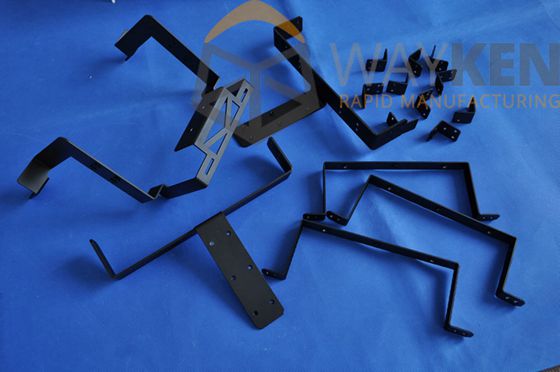
10. Pick the Right Company
Metal for welding is an industrial process that joins metals together using heat and pressure. Welders must follow strict safety procedures to avoid injury. Pick a company that offers its customers a complete range of services, including welded parts manufacturing, repair, and refurbishment. In addition, they should also provide technical assistance and advice.
Conclusion
Welding sheet metal is easy when you know the right techniques to apply. Refer to the tips on using sheet metal welding to improve your welding skills and make it work best for you. Of course, you can also leave it to the professionals.
WayKen: Your Trusted Sheet Metal Welding Partner
If you need high-quality welding services for custom sheet metal fabrication, including bending, stamping, and sheet metal prototyping. WayKen is the right partner to choose. We offer a wide range of services, from welding to CNC and laser cutting and other related machining services.
WayKen is dedicated to providing our customers with the best possible service and products. Whether you need simple parts or a complex project involving multiple materials, we will deliver results you can trust. Contact us today to get a free quote!
FAQ
Which welding is suitable for thin metals?
When it comes to welding metal, TIG welding performs the best. It is accurate, ensuring that the welds stay precisely where they should be. As a result, the finished product looks great.
How to weld thin sheet metal?
Welding thin material requires high temperatures. For this reason, we need an adequate supply of energy. We can use different techniques depending on the thickness of the material. We prefer MIG welding when dealing with thicker materials because it allows us to weld thick sheets in less time. However, if the thickness is minimal, TIG welding is the best option.
When MIG welding aluminum, can I use either AC or DC?
MIG welding is an easy and fast method of joining metals together. Both alternating and direct current MEG welding is suitable for aluminum. However, direct current welding is the fastest because it doesn’t need special equipment.

